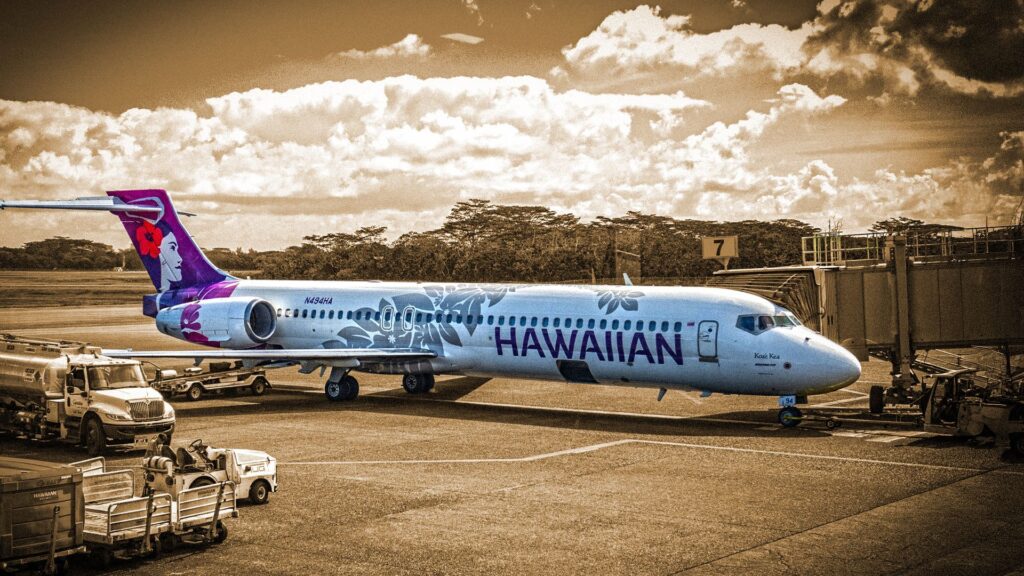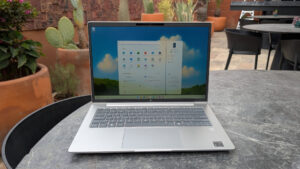
Hawaiian Airlines, the largest and longest-serving airline in Hawaii, is exploring options to replace its aging fleet of Boeing 717 aircraft. With 19 Boeing 717s, which have an average age of approximately 22 years, the airline is considering two modern alternatives: the Airbus A220 and the Embraer E195-E2. Both aircraft present viable options for enhancing Hawaiian Airlines’ operational capabilities and passenger experience.
Current Fleet and the Need for Replacement
Founded in 1929, Hawaiian Airlines is based at Honolulu’s Daniel K. Inouye International Airport (HNL) and connects the islands to the US mainland, Asia, and the South Pacific. The Boeing 717, which seats up to 128 passengers in a two-class configuration, is the smallest aircraft in the airline’s fleet. In comparison, their larger Boeing 787-9 can accommodate up to 300 passengers.
According to the latest data from ch-aviation, Hawaiian Airlines currently operates the following aircraft:
– Airbus A321neo: 18
– Airbus A330-200: 24
– Boeing 717: 19
– Boeing 787-9: 4
– Total: 65
Given the age of the Boeing 717s, Hawaiian Airlines is seeking to modernize its fleet with aircraft that offer improved efficiency and passenger comfort.
Evaluating the Airbus A220
The Airbus A220, originally developed by Bombardier as the C Series, has gained attention for its efficiency and performance. Since entering commercial service in July 2016, the A220 has proven to be a strong competitor in the regional and single-aisle aircraft market.
The A220 features a spacious cabin with a 2-3 seating configuration, allowing for wider seats and larger windows compared to other regional jets. With a range of approximately 3,900 miles for the A220-300 variant, this aircraft can effectively serve Hawaiian Airlines’ routes to the US West Coast, including Los Angeles International Airport (LAX) and Seattle-Tacoma International Airport (SEA).
Economically, the A220 is powered by Pratt & Whitney PW1500G geared turbofan engines, which deliver up to 25% lower fuel burn per seat than older aircraft models. This efficiency enhances the airline’s ability to explore new point-to-point routes.
Exploring the Embraer E195-E2
The Embraer E195-E2 is positioned as the largest aircraft in Embraer’s next-generation E-Jet family, officially entering service in 2019. This aircraft is designed for short- to medium-haul operations and offers flexibility with a capacity of up to 146 passengers, depending on the configuration.
Similar to the A220, the E195-E2 also boasts up to 25% lower fuel burn per seat compared to its predecessors, thanks to its advanced aerodynamics and Pratt & Whitney PW1900G engines. The aircraft’s range of 2,900 miles makes it suitable for Hawaiian Airlines’ interisland routes and short-haul services to the US West Coast.
Inside, the E195-E2 features a 2-2 seating layout, ensuring that no passenger is left in a middle seat, which enhances comfort on shorter flights. Its larger windows and quieter engines contribute to an improved passenger experience.
Determining the Best Fit for Hawaiian Airlines
Choosing between the Airbus A220 and the Embraer E195-E2 involves weighing operational needs and passenger experience. The A220 offers a greater range and higher passenger capacity, making it a strong candidate for longer routes. Its fuel efficiency and spacious cabin align well with Hawaiian Airlines’ commitment to providing a premium onboard experience.
Conversely, the E195-E2 may serve as an ideal option for interisland and short-haul routes where demand does not justify a larger aircraft. Its operational flexibility and efficient design support Hawaiian Airlines’ sustainability goals, while its seating configuration enhances passenger comfort.
Ultimately, both aircraft present Hawaiian Airlines with opportunities to modernize its fleet, reduce operational costs, and enhance the overall travel experience for passengers.
About Hawaiian Airlines
Hawaiian Airlines was originally established as Inter-Island Airways in 1929, connecting the islands with small amphibious aircraft. It rebranded in 1941 to its current name, gradually expanding its reach to include transpacific routes. Today, the airline operates a modern fleet featuring aircraft such as the Airbus A321neo and Boeing 787-9, which offer enhanced amenities and quieter cabins.
In March 2024, Hawaiian Airlines merged with Alaska Airlines in a deal valued at approximately US $1.9 billion. While both airlines will operate under separate brands, they will benefit from enhanced connectivity through the global network of the oneworld alliance, set to officially welcome Hawaiian Airlines in spring 2026.
As Hawaiian Airlines evaluates the future of its fleet, the decision on whether to adopt the Airbus A220 or Embraer E195-E2 will be crucial in maintaining its status as a leading carrier in the Pacific region.







